Years active 1955–84 Name Francois Truffaut | Role Film director | |
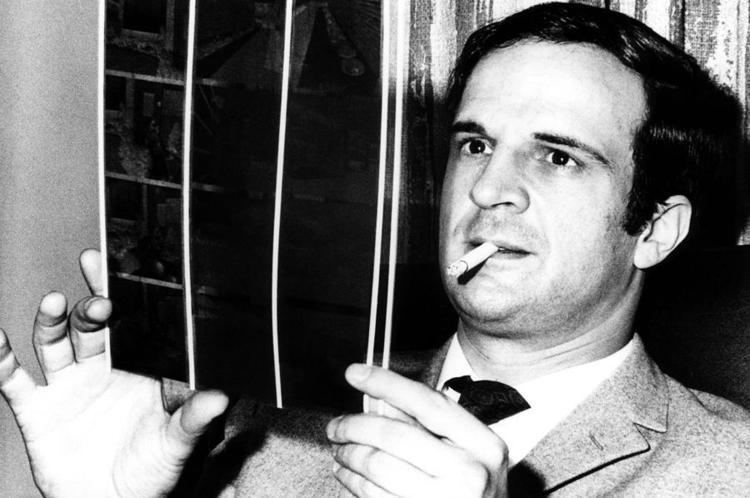 | ||
Occupation Actor, film critic, filmmaker, producer, screenwriter Spouse Madeleine Morgenstern (m. 1957–1965) Movies The 400 Blows, Jules and Jim, Day for Night Children Eva Truffaut, Laura Truffaut, Josephine Truffaut Books Hitchcock/Truffaut, The films in my life, Correspondence - 1945‑1984, Small Change: A Film Novel, Four by Truffaut: The Adve Similar People | ||
The Films of François Truffaut
François Roland Truffaut ([fʁɑ̃.swa ʁɔ.lɑ̃ tʁyfo]; 6 February 1932 – 21 October 1984) was a French film director, screenwriter, producer, actor, and film critic, as well as one of the founders of the French New Wave. In a film career lasting over a quarter of a century, he remains an icon of the French film industry, having worked on over 25 films. Truffaut's film The 400 Blows came to be a defining film of the French New Wave movement. He also directed such classics as Shoot the Piano Player (1960), Jules et Jim (1961), The Wild Child (1970), Two English Girls (1971), Day for Night (1973) and The Woman Next Door (1981).
Contents
- The Films of Franois Truffaut
- My second video best of francois truffaut tribute french jean pierre leaud henri langlois
- Early life
- Career
- Personal life and views
- Death
- Work
- Attitude towards other filmmakers
- Quotes
- References
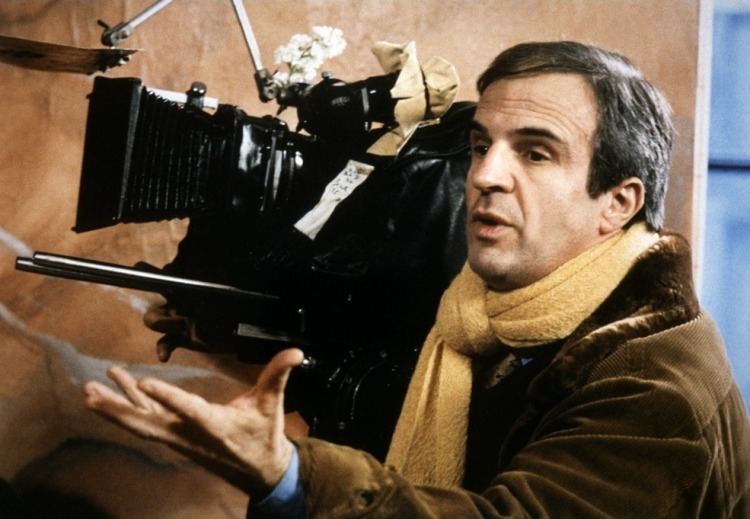
My second video best of francois truffaut tribute french jean pierre leaud henri langlois
Early life

Truffaut was born in Paris on 6 February 1932. His mother was Janine de Montferrand. His mother's future husband, Roland Truffaut, accepted him as an adopted son and gave him his surname. He was passed around to live with various nannies and his grandmother for a number of years. It was his grandmother who instilled in him her love of books and music. He lived with his grandmother until her death when Truffaut was eight years old. It was only after his grandmother's death that he lived with his parents for the first time. The identity of Truffaut's biological father was unknown, though a private detective agency in 1968 revealed that their inquiry into the matter led to a Roland Levy, a Jewish dentist from Bayonne. Truffaut's mother's family disputed the findings but Truffaut himself believed and embraced them.
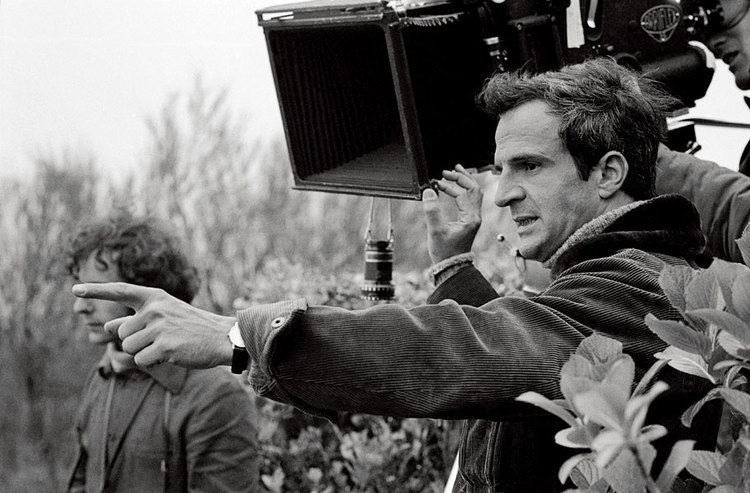
Truffaut would often stay with friends and try to be out of the house as much as possible. His best friend throughout his youth and until his death was Robert Lachenay, who was the inspiration for the character René Bigey in The 400 Blows and would work as an assistant on some of Truffaut's films. It was the cinema that offered him the greatest escape from an unsatisfying home life. He was eight years old when he saw his first movie, Abel Gance's Paradis Perdu (Paradise Lost) from 1939. It was there that his obsession began. He frequently played truant from school and would sneak into theaters because he didn't have enough money for admission. After being expelled from several schools, at the age of fourteen he decided to become self-taught. Two of his academic goals were to watch three movies a day and read three books a week.
Truffaut frequented Henri Langlois' Cinémathèque Française where he was exposed to countless foreign films from around the world. It was here that he became familiar with American cinema and directors such as John Ford, Howard Hawks and Nicholas Ray, as well as those of British director Alfred Hitchcock.
Career
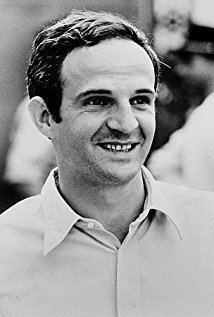
After starting his own film club in 1948, Truffaut met André Bazin, who would have great effect on his professional and personal life. Bazin was a critic and the head of another film society at the time. He became a personal friend of Truffaut's and helped him out of various financial and criminal situations during his formative years.
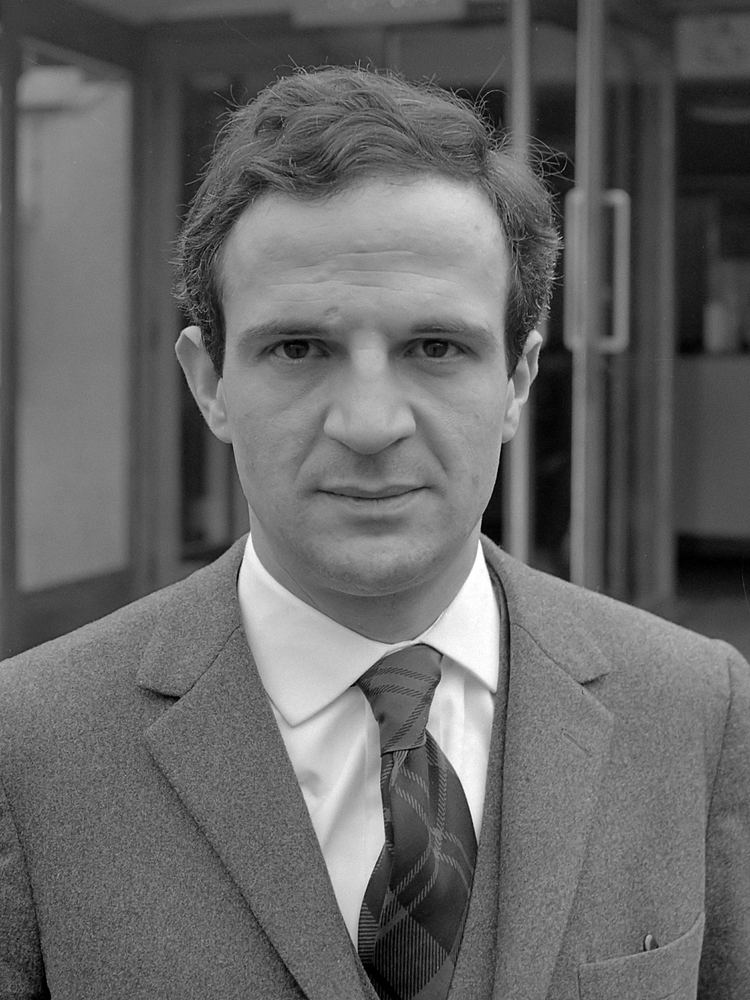
Truffaut joined the French Army in 1950, aged 18, but spent the next two years trying to escape. Truffaut was arrested for attempting to desert the army. Bazin used his various political contacts to get Truffaut released and set him up with a job at his newly formed film magazine Cahiers du cinéma. Over the next few years, Truffaut became a critic (and later editor) at Cahiers, where he became notorious for his brutal, unforgiving reviews. He was called "The Gravedigger of French Cinema" and was the only French critic not invited to the Cannes Film Festival in 1958. He supported Bazin in the development of one of the most influential theories of cinema itself, the auteur theory..

In 1954, Truffaut wrote an article called "Une Certaine Tendance du Cinéma Français" ("A Certain Trend of French Cinema"), in which he attacked the current state of French films, lambasting certain screenwriters and producers. The article resulted in a storm of controversy. Truffaut later devised the auteur theory, which stated that the director was the "author" of his work; that great directors such as Renoir or Hitchcock have distinct styles and themes that permeate all of their films. Although his theory was not widely accepted then, it gained some support in the 1960s from American critic Andrew Sarris. In 1967, Truffaut published his book-length interview of Hitchcock, Hitchcock/Truffaut (New York: Simon and Schuster).
After having been a critic, Truffaut decided to make films of his own. He started out with the short film Une Visite in 1955 and followed that up with Les Mistons in 1957. After seeing Orson Welles' Touch of Evil at the Expo 58, he was inspired to make his feature film debut in 1959 with Les Quatre Cents Coups (The 400 Blows).
This film was an instant success and won him a prize at the Cannes Film Festival. This film and the following films were successful even with the low budget he had to make the films.
He also acted, appearing in Steven Spielberg's 1977 film Close Encounters of the Third Kind, where he played scientist Claude Lacombe.
Personal life and views
Truffaut was married to Madeleine Morgenstern from 1957 to 1965, and they had two daughters, Laura (born 1959) and Eva (born 1961). Madeleine was the daughter of Ignace Morgenstern, managing director of one of France's largest film distribution companies, and was largely responsible for securing funding for Truffaut's first films. He had affairs with many of his leading ladies: in 1968 he was engaged to actress Claude Jade; Truffaut and actress Fanny Ardant lived together from 1981 to 1984 and had a daughter, Joséphine Truffaut (born 28 September 1983). Truffaut was an atheist.
Death
In July 1983, Truffaut rented France Gall and Michel Berger's house outside Honfleur, Normandy (composing for Philippe Labro's film, Rive droite, rive gauche) when he had a first stroke and was diagnosed with a brain tumor. He was expected to attend his friend Miloš Forman's Amadeus premiere when he died on 21 October 1984, aged 52, at the American Hospital in Neuilly-sur-Seine in France. At the time of his death, he still had numerous films in preparation. His goal was to make 30 films and then retire to write books for his remaining days. He was five films short of his personal goal. He is buried in Paris' Montmartre Cemetery.
Work
The 400 Blows was released in 1959 to much critical and commercial acclaim. Truffaut received a Best Director award from the Cannes Film Festival, the same festival that had banned him only one year earlier. The film follows the character of Antoine Doinel through his perilous misadventures in school, an unhappy home life and later reform school. The film is highly autobiographical. Both Truffaut and Doinel were only children of loveless marriages; they both committed petty crimes of theft and truancy from the military. Truffaut cast Jean-Pierre Léaud as Antoine Doinel. Léaud was seen as an ordinary boy of 14 who auditioned for the role after seeing a flyer, but interviews filmed after the film's release (one is included on the Criterion DVD of the film) reveal Léaud's natural sophistication and an instinctive understanding of acting for the camera. Léaud and Truffaut collaborated on several films over the years. Their most noteworthy collaboration was the continuation of the Antoine Doinel character in a series of films called "The Antoine Doinel Cycle".
The primary focus of The 400 Blows is on the life of a young character by the name of Antoine Doinel. This film follows this character through his troubled adolescence. He is caught in between an unstable parental relationship and an isolated youth. The film focuses on the real life events of the director, François Truffaut. From birth Truffaut was thrown into an undesired situation. As he was born out of wedlock, his birth had to remain a secret because of the social stigma associated with illegitimacy. He was registered as "A child born to an unknown father" in the hospital records. He was looked after by a nurse for an extended period of time. His mother eventually married and her husband Roland gave his surname, Truffaut, to François.
Although he was legally accepted as a legitimate child, his parents did not accept him. The Truffauts had another child who died shortly after birth. This experience saddened them greatly and as a result they despised François because of the memory of regret that he represented (Knopf 4). He was an outcast from his earliest years, dismissed as an unwanted child. François was sent to live with his grandparents. It wasn't until François's grandmother's death before his parents took him in, much to the dismay of his own mother. The experiences with his mother were harsh. He recalled being treated badly by her but he found comfort in his father's laughter and overall spirit. The relationship with Roland was more comforting than the one with his own mother. François had a very depressing childhood after moving in with his parents. They would leave him alone whenever they would go on vacations. He even recalled memories of being alone during Christmas. Being left alone forced François into a sense of independence, he would often do various tasks around the house in order to improve it such as painting or changing the electric outlets. Sadly, these kind gestures often resulted in a catastrophic event causing him to get scolded by his mother. His father would mostly laugh them off.
The 400 Blows marked the beginning of the French New Wave movement, which gave directors such as Jean-Luc Godard, Claude Chabrol and Jacques Rivette a wider audience. The New Wave dealt with a self-conscious rejection of traditional cinema structure. This was a topic on which Truffaut had been writing for years.
Following the success of The 400 Blows, Truffaut featured disjunctive editing and seemingly random voice-overs in his next film Shoot the Piano Player (1960) starring Charles Aznavour. Truffaut has stated that in the middle of filming, he realized that he hated gangsters. But since gangsters were a main part of the story, he toned up the comical aspect of the characters and made the movie more attuned to his liking. Even though Shoot the Piano Player was much appreciated by critics, it performed poorly at the box office. While the film focused on two of the French New Wave's favorite elements, American film noir and themselves, Truffaut never again experimented as heavily.
In 1962, Truffaut directed his third movie, Jules and Jim, a romantic drama starring Jeanne Moreau. Over the next decade, Truffaut had varying degrees of success with his films. In 1963, Truffaut was approached to direct an American film called Bonnie and Clyde, with a treatment written by Esquire journalists, David Newman and Robert Benton intended to introduce the French New Wave to Hollywood. Although he was interested enough to help in script development, Truffaut ultimately declined, but not before interesting Jean-Luc Godard and American actor and would be producer, Warren Beatty, the latter of whom proceeded with the film with director Arthur Penn. As for Truffaut, his first non-French film was an 1966 adaptation of Ray Bradbury's classic science fiction novel Fahrenheit 451, showcasing Truffaut's love of books. His only English-speaking film was a great challenge for Truffaut, because he barely spoke English himself. This was also his first film shot in color. The larger scale production was difficult for Truffaut, who had worked only with small crews and budgets.
Truffaut worked on projects with varied subjects. The Bride Wore Black (1968), a brutal tale of revenge, is a stylish homage to the films of Alfred Hitchcock (once again starring Jeanne Moreau). Mississippi Mermaid (1969), with Catherine Deneuve, is an identity-bending romantic thriller. Stolen Kisses (1968) and Bed and Board (1970) are continuations of the Antoine Doinel Cycle. The Wild Child (1970) included Truffaut's acting debut in the lead role of 18th century physician Jean Marc Gaspard Itard.
Two English Girls (1971) is the female reflection of the same love story as "Jules et Jim". It is based on a story written by Henri-Pierre Roche, who also wrote Jules and Jim. It is about a man who falls equally in love with two sisters, and their love affair over a period of years.
Day for Night won Truffaut a Best Foreign Film Oscar in 1973. The film is probably his most reflective work. It is the story of a film crew trying to finish their film while dealing with all of the personal and professional problems that accompany making a movie. Truffaut plays the director of the fictional film being made. This film features scenes shown in his previous films. It is considered to be his best film since his earliest work. Time magazine placed it on their list of 100 Best Films of the Century (along with The 400 Blows).
In 1975, Truffaut gained more notoriety with The Story of Adele H. Isabelle Adjani in the title role earned a nomination for a Best Actress Oscar. Truffaut's 1976 film Small Change gained a Golden Globe Nomination for Best Foreign Film.
One of Truffaut's final films gave him an international revival. In 1980, his film The Last Metro garnered twelve César Award nominations with ten wins, including Best Director.
Truffaut's final movie was shot in black and white. It gives his career almost a sense of having bookends. Confidentially Yours is Truffaut's tribute to his favorite director, Alfred Hitchcock. It deals with numerous Hitchcockian themes, such as private guilt vs. public innocence, a woman investigating a murder, anonymous locations, etc.
Among Truffaut's films, a series features the character Antoine Doinel, played by the actor Jean-Pierre Léaud. He began his career in The 400 Blows at the age of fourteen, and continued as the favorite actor and "double" of Truffaut. The series continued with Antoine and Colette (a short film in the anthology Love at Twenty), Stolen Kisses (in which he falls in love with Christine Darbon alias Claude Jade), Bed and Board about the married couple Antoine and Christine—and, finally, Love on the Run, where the couple go through a divorce.
In the last movies, Léaud's girlfriend and later wife, Christine Darbon, was played by Truffaut's favorite actress, Claude Jade. During the filming of Stolen Kisses, Truffaut himself fell in love with, and was briefly engaged to, Claude Jade.
A keen reader, Truffaut adapted many literary works, including two novels by Henri-Pierre Roché, Ray Bradbury's Fahrenheit 451, Henry James' "The Altar of the Dead", filmed as The Green Room, and several American detective novels.
Truffaut's other films were from original screenplays, often co-written by the screenwriters Suzanne Schiffman or Jean Gruault. They featured diverse subjects, the sombre The Story of Adele H., inspired by the life of the daughter of Victor Hugo, with Isabelle Adjani; Day for Night, shot at the Studio La Victorine describing the ups and downs of film-making; and The Last Metro, set during the German occupation of France, a film rewarded by ten César Awards.
Known as being a lifelong cinephile, Truffaut once (according to the 1993 documentary film François Truffaut: Stolen Portraits) threw a hitchhiker he had picked up out of his car after learning that the hitchhiker didn't like films.
Truffaut is admired among other filmmakers and several tributes to his work have appeared in other films such as Almost Famous, Face and The Diving Bell and the Butterfly, as well as novelist Haruki Murakami's Kafka on the Shore.
Attitude towards other filmmakers
Truffaut expressed his admiration for filmmakers such as Luis Buñuel, Ingmar Bergman, Robert Bresson, Roberto Rossellini, and Alfred Hitchcock. Truffaut wrote Hitchcock/Truffaut, a book about Hitchcock, based on a lengthy series of interviews. He once called German New Wave filmmaker Werner Herzog "the most important film director alive".
On Jean Renoir, he said: "I think Renoir is the only filmmaker who's practically infallible, who has never made a mistake on film. And I think if he never made mistakes, it's because he always found solutions based on simplicity—human solutions. He's one film director who never pretended. He never tried to have a style, and if you know his work—which is very comprehensive, since he dealt with all sorts of subjects—when you get stuck, especially as a young filmmaker, you can think of how Renoir would have handled the situation, and you generally find a solution".
In 1973, Jean-Luc Godard accused Truffaut of making a movie that was a "lie", and Truffaut replied with a 20-page letter in which he accused Godard of being a radical-chic hypocrite, a man who believed everyone to be "equal" in theory only. The two never saw each other again. However, as noted by Serge Toubiana and Antoine de Baecque in their biography of Truffaut, Godard tried to reconcile their friendship later on, and after Truffaut's death wrote the introduction to a collection of his letters and a lengthy tribute in his video-essay film Histoire(s) du cinéma.
Quotes
Film lovers are sick people
In love - women are professionals - men are amateurs
I have always preferred the reflection of the life to life itself
